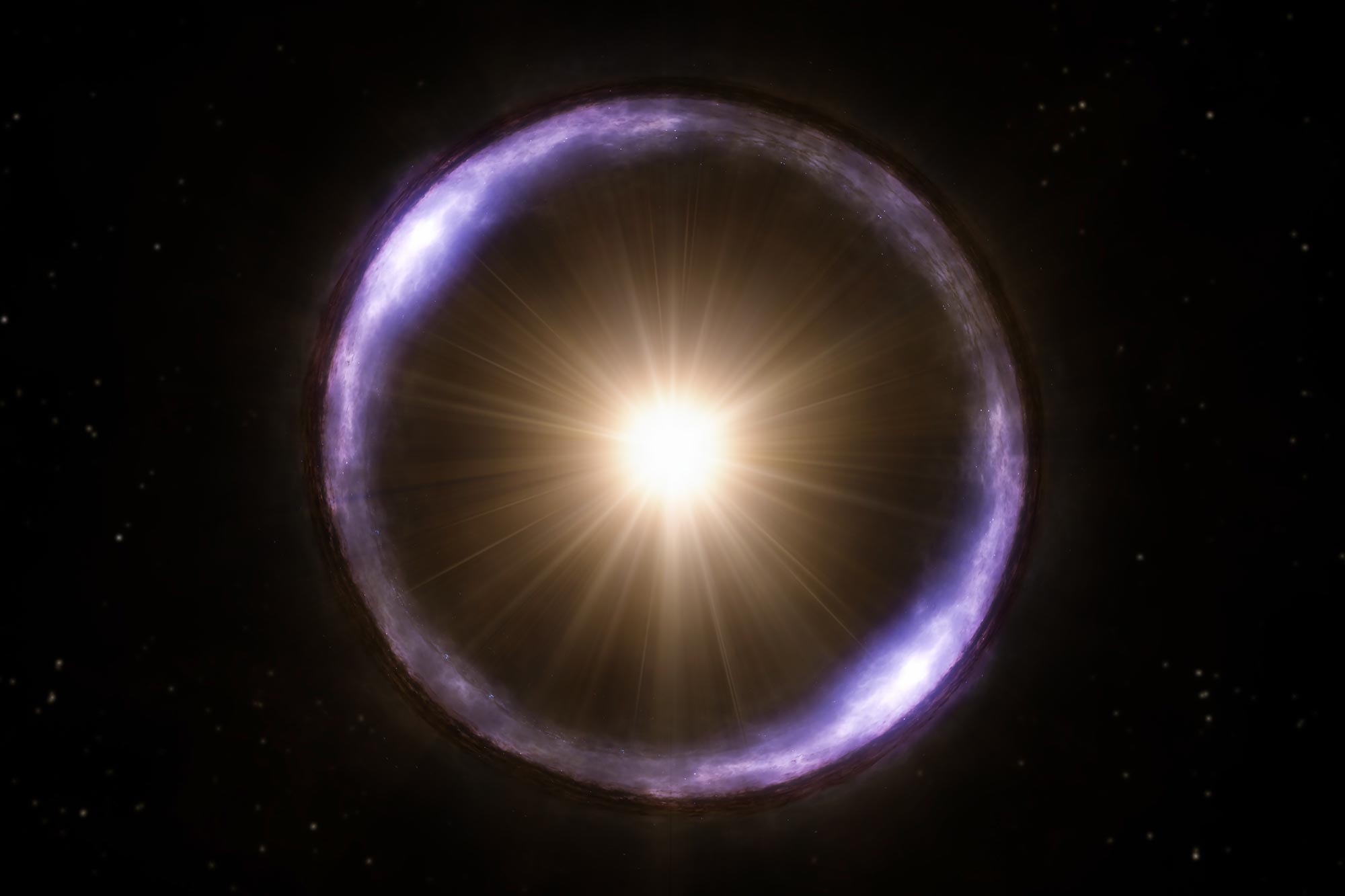General Relativity: Gravitational Lensing

Gravitational lensing is truly one of the most stunning applications of general relativity, as seen with the ring in the picture above. Apart from its physical beauty, the treasure lies in the knowledge of how the ring is formed in the first place. While it may seem like highly-condensed matter at first, it is actually just the light from stars bent around the massive central object. As counter-intuitive as that may seem, if spacetime curves due to massive objects, so does the path of light in it.
HOW DOES GRAVITATIONAL LENSING WORK?
Proposed by the theory of general relativity, gravitational lensing is the phenomenon where light from a distant source bends around a massive object (typically a cluster of galaxies). Einstein calculated the following formula for a more mathematical approach.
The angular amount of bending is given by:
where G is the gravitational constant
M is the mass of the massive object
r is the distance from the radiation to the center of the massive object
c is the speed of light
WHY ISN'T GRAVITATIONAL LENSING COMMONLY OBSERVED?
The reason gravitational lensing isn’t always visible is due to the fact that most lenses are not powerful enough (not enough mass) to distort light to such massive extents. In turn, the lens images are only a few arcseconds long. [an arcsecond is a unit equivalent to 1/3600th of a degree, which is 1/216000th of a turn]
Gravitational Lensing is one of the most visible consequences of general relativity. It has provided us with the potential to explore regions of spacetime, which would have been impossible to observe otherwise. Learn more about other consequences, and general relativity in its entirety, through this oversimplified presentation.



Comments
Post a Comment